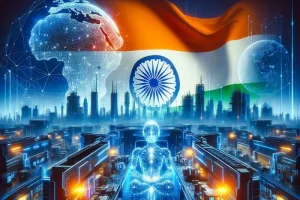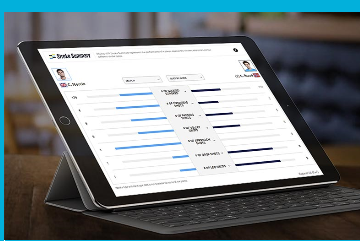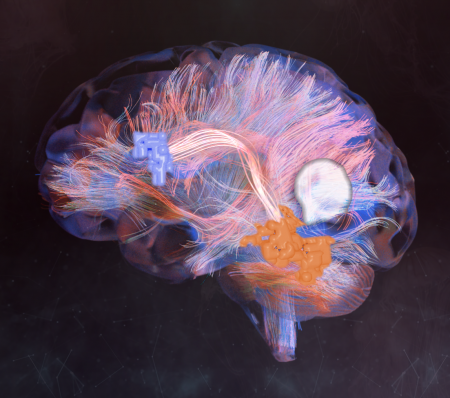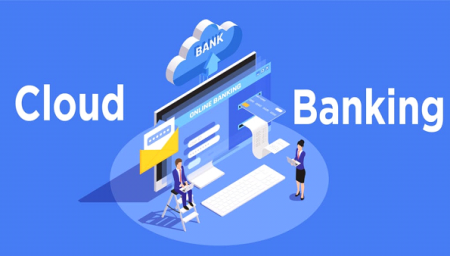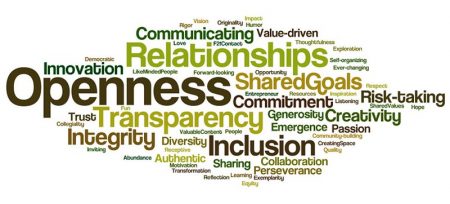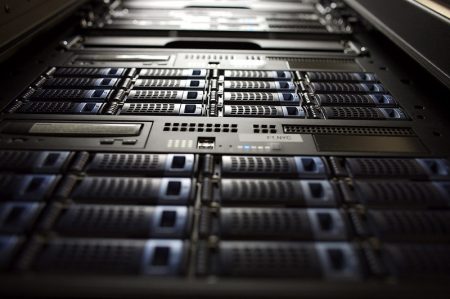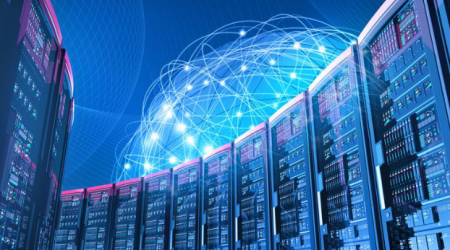What is common between Serena Williams in the US Open and Cloud Data Computing? Uma Iyer finds out.
With one last twirl Serena Williams, the 23-time Grand Slam champion, bid goodbye to tennis on Friday night bringing the curtains down on her striking career. Also what was noteworthy is that the data centers and cloud computing made it a farewell to be remembered and compared for generations to come!

What is the common denominator between cloud computing and data centers versus a game of skill, stamina, and strength you may ask. Well, all the data and statistics you see on your computer about the US Open, to the Amazon Prime Streaming Services, to the best visual effects with 3D statistics, is powered by Cloud Data provisioning.
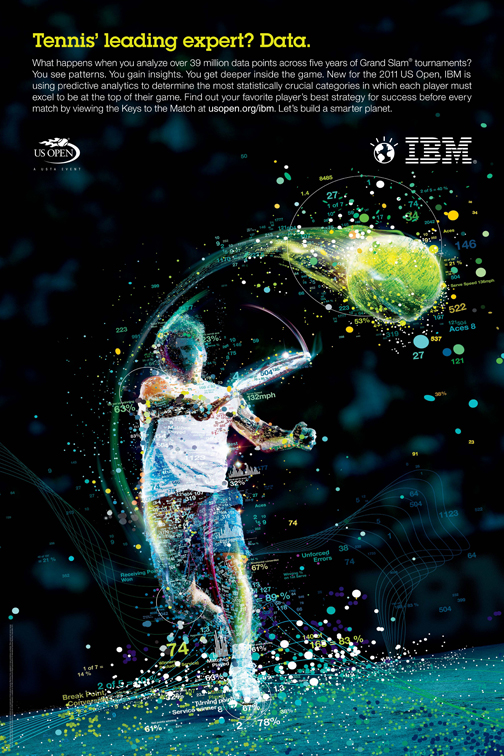
Every court is meticulously streamed and archived; every ball is methodically computed. Each part of the tennis court is tallied like a chess board. Artificial Intelligence does predictive analysis based on the number of unforced errors and first serve points won.
As I sit down to author this article, I drift into watching Andy Murray and Emilio Nava. They are playing Round 64. In a court which is not the center court. A couple of years ago, this would have been unheard of. We would have started watching the US Open or any of the usual channels with the mercy of the TV providers.
Now with the advent of Amazon Prime, we can watch from the qualifiers to the finals on every single court. We can replay and understand the game styles of the greatest players with full access to the matches.
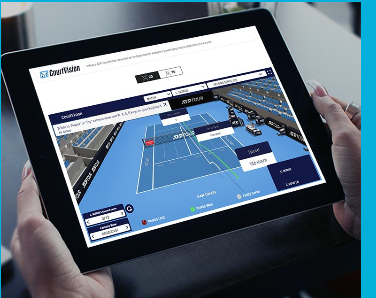
How do they make it possible?
Each of the shots that the player plays have a certain set of measurables and variables. Measurables include simple data and facts like if the ball was IN or OUT or if the serve was an ace or a double fault. Back in the day, these had to be manually fed.
Now, with motion capture AI powered options, and technology like Hawk-Eye, it is an extremely easy and a standard data point to capture. Added to this, there would be various unstructured data like the height of the ball, position on the court and other variables like heat, humidity, sun, and the list is endless.
In tennis, it is controllable and uncontrollable while in data it is structured and unstructured. Millions of shots played will be stored and captured to predict meaningful information to help the players and the viewers get a wonderful experience using tools like IBM Watson, etc.
You can bet on that
What also helps massively is the betting world. The odds in favor keep changing by the minute. One such example is Rafael Nadal’s match against Daniil Medvedev where he came back from two sets down in the final of Australian Open 2022 with an extremely tight last set.
Nadal may be a human computer using all his 10000-hour practice rule, data in the cloud also uses the millions of data points to support and work through the betting system to create an experience for the betting world.
The odds were massively in favor of Medvedev in the second and third set soon turning in Nadal’s favor. So, anyone who did a match bet in favor of Nadal would have made quite a bit of money!
But where is this cloud?
When I started my career, Sify.com was once a humble Internet Service Provider with a data center. That was the first data center experience I had with mammoth servers and the infrastructure team boasting of the latest servers they were managing.
Times have evolved and data centers have now moved to the cloud and hybrid structures using cloud clusters to leverage space and efficiency based on the access one requires it.
“According to numerous publications, the world’s largest data center is the China Telecom-Inner Mongolia Information Park. At a cost of $3 billion, it spans one million square meters (10,763,910 square feet) and consumes 150MW across six data halls.” This is an unverified information.
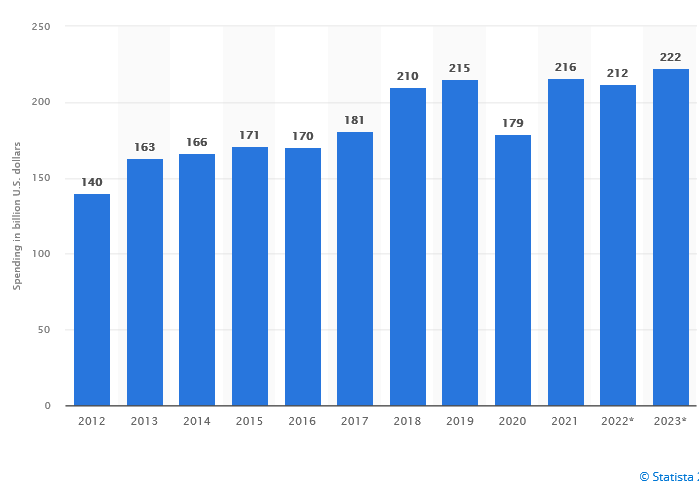
(in billion U.S. dollars)
Trafficking in Data
The most important aspect of Cloud computing is streamlined access path to the most streamed data. Modern technologies like SD-WAN help optimize use of internet bandwidth and direct it to the cloud that most requires.
As the times rapidly change and with the use of Software as a Service and Platform, traditional data centers are becoming a passé with increasingly limited use of on-prem services. Traditional Wireless Access Network is also not helpful as it backhauls all traffic, introduces latency, and impairs performance. All security is done in advance that causes latency in access and poor experience.
SD-WAN on the other hand steers traffic in a rule-based model programmed based on peak data transmission requirements and learns over time based on congestion statistics and applies real-time changes to the network.
It is adaptable and has grown to reduce manual intervention. Also, traffic can be managed using Quality of Experience by using multiple WANs and creating and acting on predefined rules for failed paths and underperforming traffic paths. The timing for the outages can be managed and packet losses, latency and all issues can be resolved.
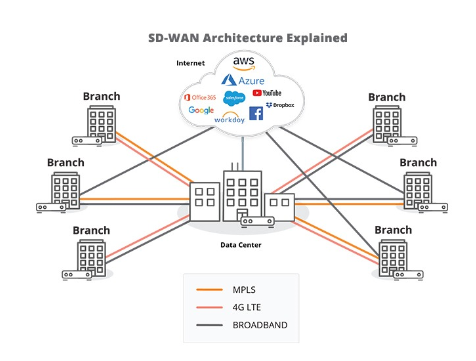
Cloud Data and Predictive technology
Cloud can hold massive data, access can be optimized as well, but the data is used for learning and predictive technology. Various models are employed to use the data and create much more comprehensive models that support the requirements of today’s companies that support streaming and data analysis.
There are huge sets of data that are used for Forecasting based on historical data, Classification using categorization, using outliers with unusual data to detect fraud, specific data models, dividing data into relevant data sets. These are some of the ways in which zillions of bytes of information are used in the industries.
The Predictive models are reusable and are trainable using algorithms. Depending on the scope, scale and the analytics models and data profiling, data is cleaned and integrated into the business processes. They are monitored for relevance. The data driven by algorithms play a huge role in determining patterns and trends. They perform specific functions that are beyond human imagination.
“The Data Centers will play an integral role in businesses because of the value they offer. They are the backbone to entertainment, Fraud prevention, disaster recovery, marketing campaigns and many more industries,” says Data Science consultant, Maya Darbina.
What is next?
The data is only growing, and data centers and footprint is one of the biggest discussions. World is the oyster, and you can find any access to any data at any point in time. The data centers do service a layperson and organization alike, and this is an ever-growing real-estate which is still nascent.
If one needs real-time, online infrastructure, simplified deployments, remote support all day, flexible power and usage and sustainable options, cloud data centers is the future.
Serena may have lost the third round, but her legacy will live on, much like the cloud where new entrants may come and go, but data will be there…up in the cloud!

In case you missed:
- None Found
